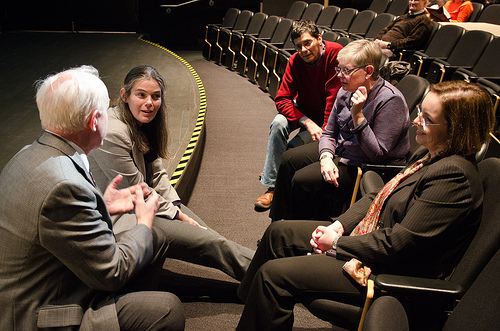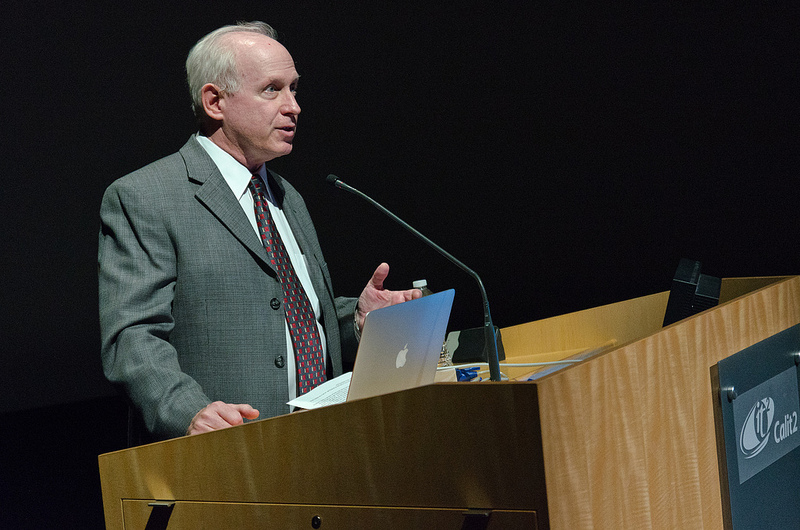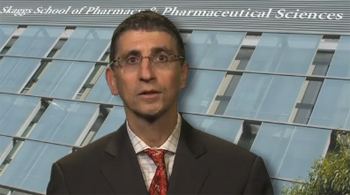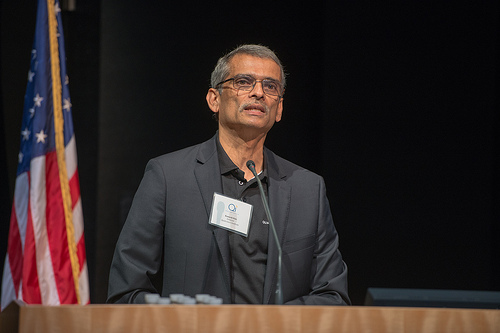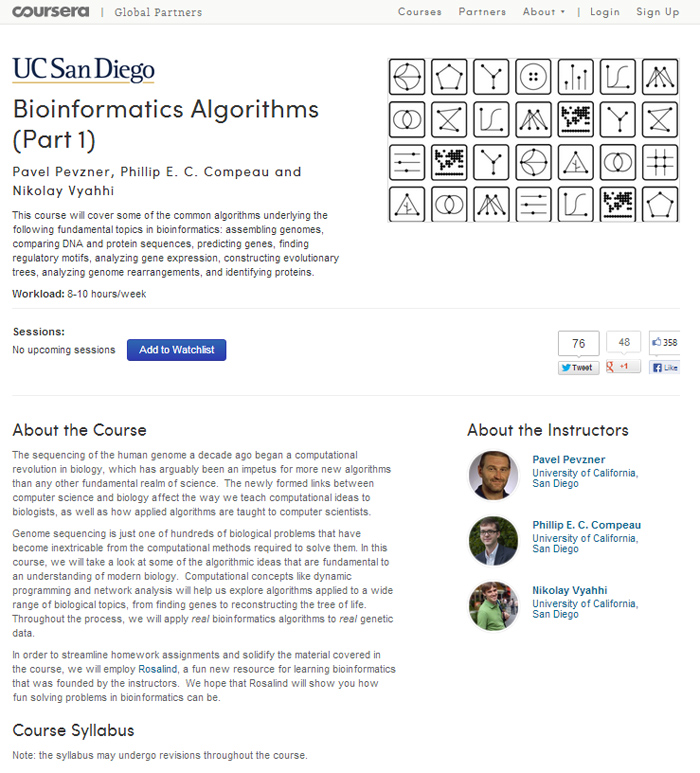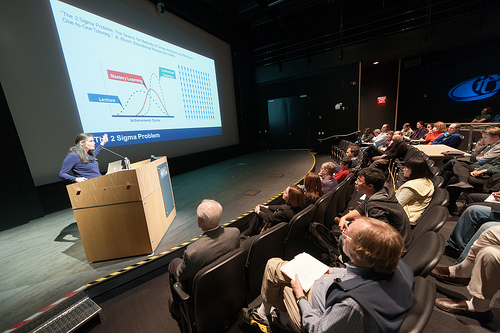Technology-Enhanced Learning: From Campus to the World
Massive Open Online Courses (MOOCs) Offer Unique Educational Opportunities
San Diego, June 21, 2013 -- The academic landscape is changing rapidly, due in no small part to recent advances in technologies to enable, enhance and deliver teaching and learning to a worldwide audience.
At the University of California, San Diego, administrators and faculty are particularly focused on using technology to transform the undergraduate learning experience (saving money in the process). They’re doing this in the context of the UC San Diego Education Initiative, as well as the Technology-Enhanced Learning (TEL) Initiative jump-started by Calit2’s Qualcomm Institute. Both programs are helping to formulate a way forward for the campus, with the Education Initiative focused on policy, and the TEL Initiative experimenting with various models of online learning.
|
Last December, the UC San Diego division of the California Institute for Telecommunications and Information Technology (Calit2), now called the Qualcomm Institute, convened a meeting with Education Initiative leaders to discuss ways to integrate new technologies and pedagogical approaches into the UC San Diego undergraduate learning experience. The planning meeting attracted more than 30 senior faculty and administrators from across campus.
A key outcome of that meeting was a decision by the Qualcomm Institute to undertake its parallel TEL Initiative. “Subsequent discussions made it clear that colleagues across the campus recognize the need to experiment with new teaching and learning models made possible by information technology,” said Qualcomm Institute director Ramesh Rao. “We believe the TEL Initiative has an important role to play in enabling a conversation about novel ways to incorporate technology in the classroom and to deliver courses online, and we intend to try out a variety of methods for reinforcing classroom teaching while also making some of our collective knowledge available to eager learners around the world.”
|
The dean of the Division of Social Sciences, Jeff Elman, is a member of the TEL Initiative’s leadership team. “Those of us working in academia sometimes worry that incorporating new technologies into classroom activities will somehow detract from the overall university experience, or will prevent individualized attention to student needs,” said Elman, a distinguished professor of cognitive science. “In fact, technology-enhanced learning, including online coursework, does just the opposite, as in many cases it seems to bring out the best in students and professors alike by providing a novel ‘common ground’ for shared instruction and discourse.”
MOOCs
The Qualcomm Institute believes it can play a critical role in developing massive open online courses (MOOCs). “We have the technical personnel and resources needed to test various technology-enhanced models in both physical and virtual classrooms,” said institute director Ramesh Rao.
A MOOC can be viewed as a ‘course-in-a-box’ that is structured much like a traditional university class, with a professor providing instruction to students for a fixed number of class sessions, with a course’s start and end dates set by the professor. The majority – if not all – of a MOOC’s course activities take place online through such features as discussion boards, crowd-sourced instructional support, and interactive quizzes.
|
To boost activity in this area, the Qualcomm Institute’s Rao has invited professors from several academic departments and research centers to use the institute’s in-house resources — including an HD Studio for video production — to record and edit a pilot set of MOOCs for use in connection with new as well as established UC San Diego courses.
Coursera is already advertising part one of a series on “Bioinformatics Algorithms,” which will be the first Coursera course recorded in the Qualcomm Institute’s HD Studio. It will be taught by Computer Science and Engineering professor Pavel Pevzner, with graduate students from his labs at UC San Diego (mathematics Ph.D. candidate Phillip Compeau) and the Algorithmic Biology Lab at St. Petersburg Academic University in Russia (Nikolay Vyahhi, director of the university’s graduate program on algorithms and data analysis in bioinformatics).
|
“Brain-computer interface is now a hot topic in brain imaging,” noted Swartz Center director Scott Makeig. “Christian’s open-source BCILAB software environment is currently the most advanced and flexible tool in this field, and his knowledge is extensive, so this seemed like the best way to begin building an online EEG workshop portfolio.”
In addition to the courses about bioinformatics and brain-computer interfaces, the Qualcomm Institute will help produce a MOOC on energy and biofuels. The course, “Our Energy Future: Sustainable Food and Fuel for the 21st Century,” is being developed by UC San Diego chemistry professor Stephen Mayfield, with funding from Google. Production will kick off over the summer, and the MOOC will incorporate a series of public lectures in the fall at the Qualcomm Institute, with each event offering three TED-style talks by UC San Diego faculty experts. The MOOC will be constructed on Google’s open-source Course Builder platform, and it will be made available for academic credit through UC San Diego Extension. The lectures, interviews and other learning modules will also be offered more broadly as a public service to what Mayfield calls a “global classroom.”
“The MOOC will be based on the university’s Introduction to Biofuels course, but it will be expanded to include engineering, economics, climate science, and social science,” explained Mayfield, who also leads the San Diego Center for Algae Biology. “We will also discuss energy production and utilization from each of those perspectives.”
Hybrid MOOCs
While most of the headlines have focused on the development of MOOCs for worldwide, exclusively online distribution, some faculty members are hoping to incorporate MOOCs into their existing university courses. Case in point: Qualcomm Institute director Ramesh Rao is developing a hybrid that combines online instruction and in-class discussion. Students in the Electrical and Computer Engineering department’s undergraduate course on probability theory, which Rao will teach during the 2013-14 academic year, will have the opportunity to test the hybrid MOOC in and out of the classroom. Much of the online course will consist of pre-recorded modules covering topics in the assigned readings. Students would be expected to watch the videos before going to class. Regular classroom hours for Rao’s hybrid course would then be devoted to digging deeper, discussing and responding to questions and comments from students.
|
Daphne Koller agrees. The Coursera co-founder and Stanford University professor notes that peer grading and collaboration – and the resulting shared community that arises from both – are key benefits of MOOC-based teaching platforms. MOOC offerings may reach tens of thousands of students across the globe, creating a situation that requires extensive online cooperation between students in the grading and review process in order for a course to succeed. “This is a global community, with people from everywhere in the world, and they communicate with each other in a way that is our attempt to help them substitute for the one thing that really just doesn’t scale, which is the interaction with the instructor,” Koller said in a talk at Calit2’s Qualcomm Institute earlier this year.
“Since the instructor can’t interact with tens of thousands of students, we’re substituting for that by having students learn from each other.” Koller’s seminar was co-sponsored by the UC San Diego Education Initiative and the TEL Initiative.
|
The Economic Imperative
Standard and hybrid MOOCs also offer an important way forward for top-level universities such as the University of California (UC) that are dealing with budgets that threaten to undermine the university’s core mission. As UC president Mark Yudof told a meeting of UC Regents in January, fiscal concerns and multiple years of system-wide underfunding and cost-cutting play a role in pushing more classes online.
“The finances simply no longer exist to support instruction the way we've done it,” concluded Yudof. “The challenge is to be strong and thrive within the new fiscal and pedagogical realities.”
For those realities, MOOCs in whatever form could be the next big thing. There is every reason to believe that students weaned on multiplayer online video games will welcome MOOCs in and out of the classroom. Meanwhile, in addition to Coursera, MOOC providers such as Udacity and edX are specializing in online course offerings and the broadening of university curricula to include Web-based classes open to a potentially unlimited number of students around the world.
New platforms, courses, and participating institutions are announced almost daily. Indeed, a small team from the Qualcomm Institute is tracking the development of MOOCs on a global basis. MOOC Watch is an effort to visualize the ecosystem that has grown up in the past two years, and it tracks the educational institutions that have signed up to offer courses on the different platforms.
“MOOC Watch visualizations will be accessible through the new TEL website we are launching in July,” said postdoctoral researcher Deborah Forster.
Related Links
Google Course Builder
Daphne Koller Lecture at Calit2
Coursera: UC San Diego Course on Bioinformatics Algorithms
UC San Diego Education Initiative
San Diego Center for Algae Biology
Media Contacts
Doug Ramsey, 858-822-5825, dramsey@ucsd.edu
Program Contact: Deborah Forster, 858-245-9924, dforster@ucsd.edu

